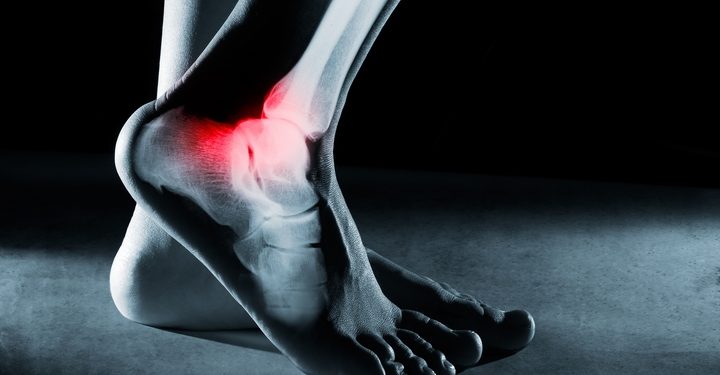9 Different Signs of a Broken Foot

Ouch! A broken foot results from an injury or fracture to the bones in the foot. The human foot contains 26 bones with 33 joints and support from more than a hundred muscles, tendons, and ligaments. Breaking a foot is surprisingly common. Nearly one out of every ten broken bones takes place in the foot. The nature of these fractures can run the gamut between painful hairline cracks in the bones to spectacular compound fractures, wherein bone pierces the skin, becoming visible. The most common causes of a broken foot include car accidents, falls and even just walking wrong.
Determining whether or not you have broken your foot can be distressing and confusing. The symptoms of a broken foot are often indistinguishable from a sprain or bruise. Even when we suspect that we have broken a bone, we might have trouble accepting this common injury and we might panic. Despite how common fracturing bones in the foot can be, so far, there’s no book in the library entitled, So You Have Broken Your Foot.
Treatment options will depend on the nature and severity of the fracture. A severe broken foot can even require surgical intervention with metal supports in the form of plates, rods and screws to preserve. This list offers common signs of a broken foot, and answers some common questions related to dealing with a fracture.
Below are nine signs of a broken foot:
1. Swelling

A broken foot causes swelling surrounding the break. The skin will expand and be warm to the touch. This symptom is shared by fractures and sprains. Applying ice and compression to the affected area will help control swelling and provide some relief. Elevating the foot above your waist will also help decrease swelling. Keep the foot elevated at night when sleeping by using a pillow or blanket to support the leg.
2. Bruising

Bruises are often common signs of a broken foot. Often paired with swelling, bruising of the skin in the form of a purplish discolouration accompanies a break. The skin will be sensitive to the touch and take time to subside.
3. Tenderness

If your foot is feeling a little tender, this might be one of the signs of a broken foot. A broken foot will be tender to the touch, especially in bruised or swollen. Make sure you are wearing comfort shoes so that you don’t aggravate your foot further.
4. Trouble walking or supporting weight

A common question you will be asked is “can you walk on it?” Especially for hairline fractures, it is possible to have a broken foot and still walk be able on it. However, the complete inability to walk or support your weight on your foot is a good indication of a break.
5. Is my foot sprained or broken?

This is the most common question related to a broken foot. The confusion is normal. It can be very difficult to tell. Symptoms like swelling, bruising, and tenderness are common to both conditions. One of the reasons this can be so difficult to resolve is that the two can overlap resulting from the same injury. Some will say, condescendingly, that you would know if you broke your foot, but this is not always so. Persistence, severity and duration of the injury are the most telling differences between a fracture and sprain.
6. Pain

The degree, intensity and persistence of the pain that a sufferer experiences is a good indication of a break. Breaking bones typically involve an immediate and throbbing sensation of intense pain. This pain may increase as you attempt to move your foot and decreases with rest. Ice, rest, elevation and over-the-counter painkillers might help temporarily relieve some of these symptoms. When a fracture is left untreated, the pain may worsen as time goes on.
7. Deformity

Sometimes, there are obvious visual signs of a fracture, like a deformity in the foot. The biggest consequence of leaving a broken foot untreated is improper healing, which can leave the foot deformed. Other consequences include infection, limited range of motion, and misalignment.
8. Cracking sound

Many people say that they were able to hear their bones break. Fractures make what sounds like a cracking noise, while a sprain has been likened to sounding more like popping or grinding noise.
9. Injury or experiencing known causes of fractures

The most common causes of a fracture in the foot include automobile accidents, falls, tripping, impact from heavy objects, sports injury, stubbing your toe, missteps, overuse causing stress fractures, and having poor bone density or related conditions like osteoporosis. If you have experienced any of these injuries, seek medical attention from a professional.
If you are experiencing any of these symptoms, consider consulting a doctor. Visit a doctor immediately if you cannot walk, or if after an extended period of time the pain and other symptoms worsen. If you cannot see your doctor, go to a hospital emergency room. A broken foot can cause infection, nerve damage, and even injury to blood vessels that can affect circulation and cause other serious medical problems.
Years after an injury, painful arthritis might result from an ancient fracture. Wearing appropriate footwear, training effectively, and following a bone-healthy lifestyle can help to preserve your feet. At home, using nightlights and maintaining a clean and decluttered home can also help prevent injury.


